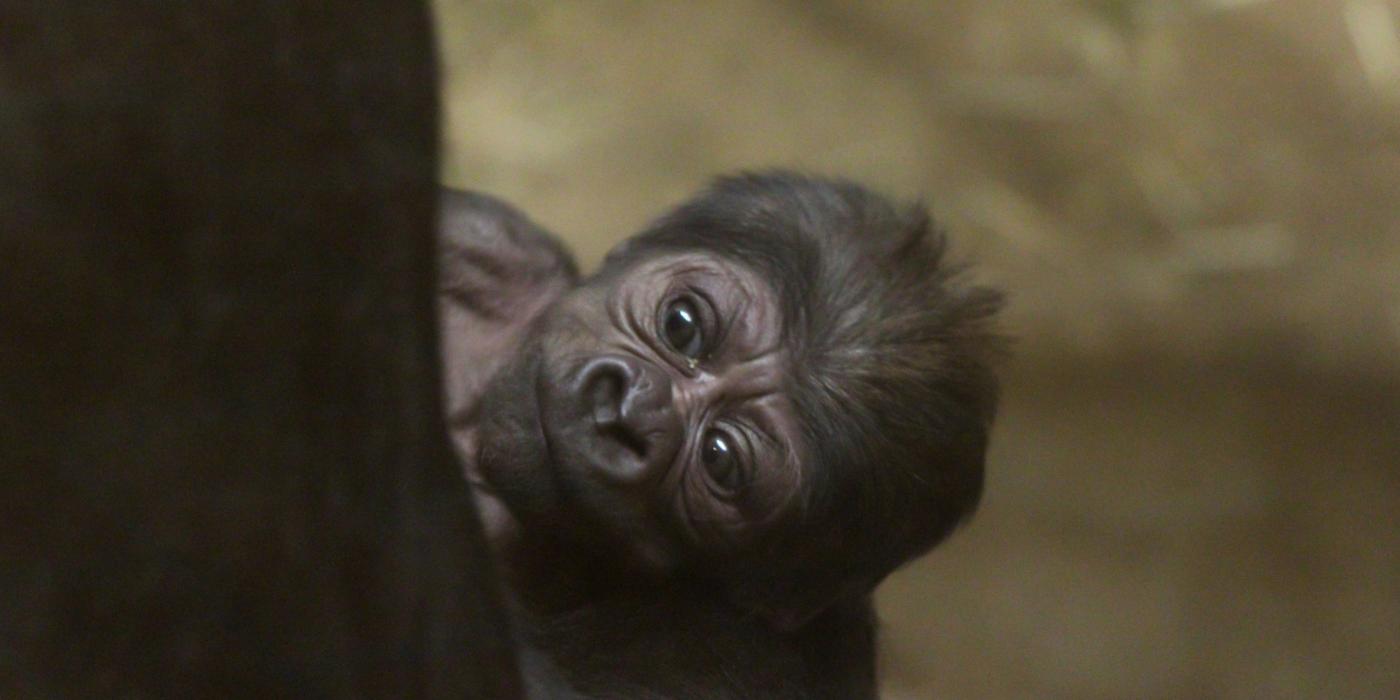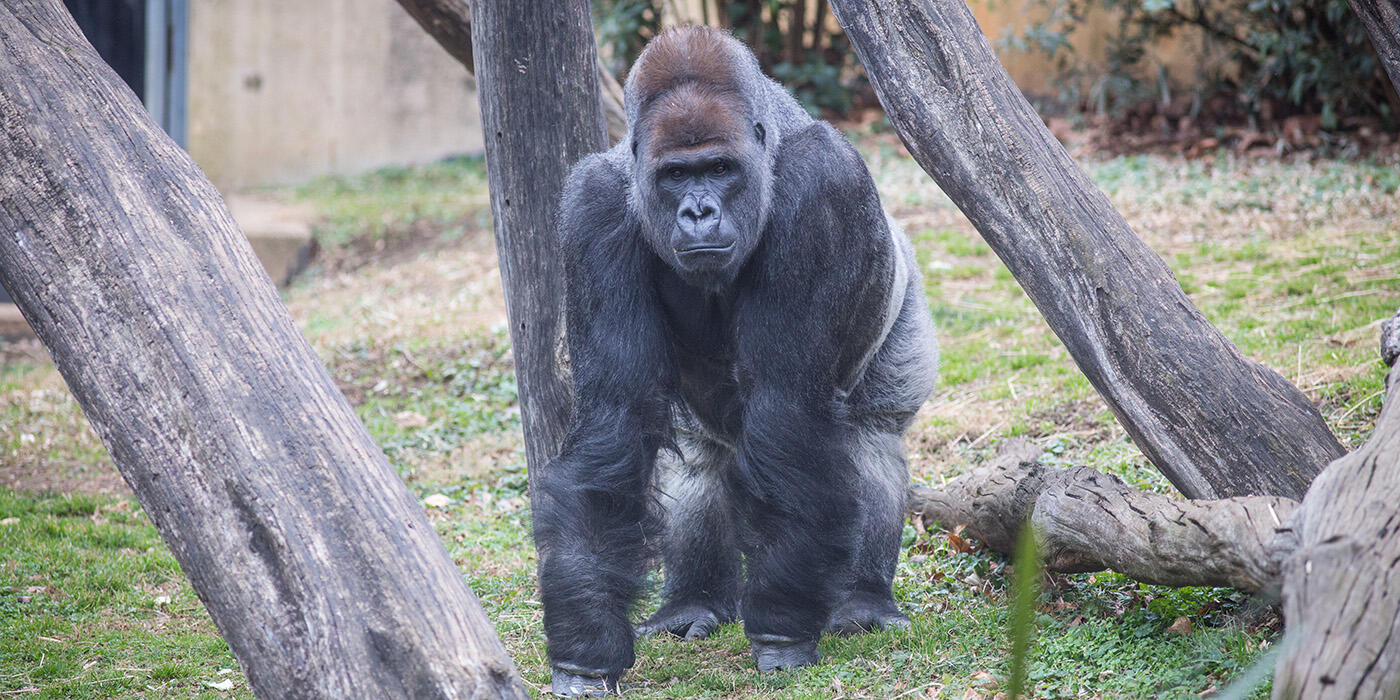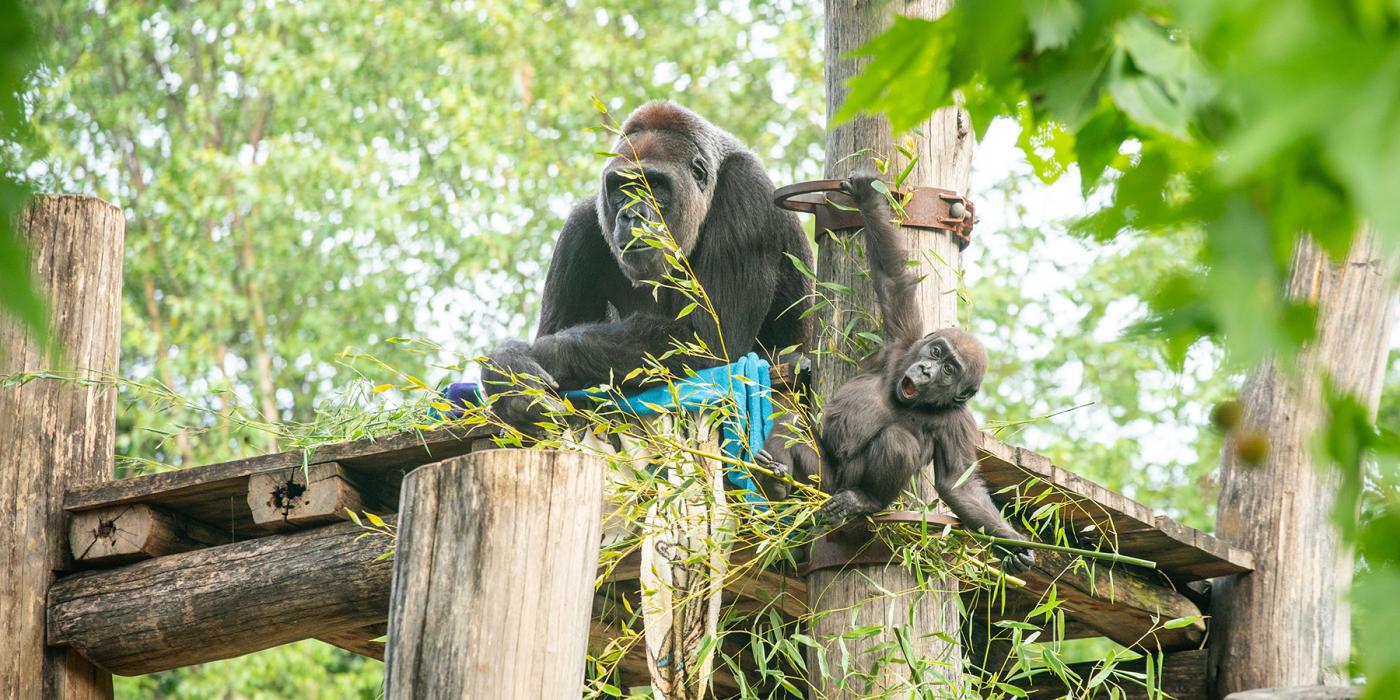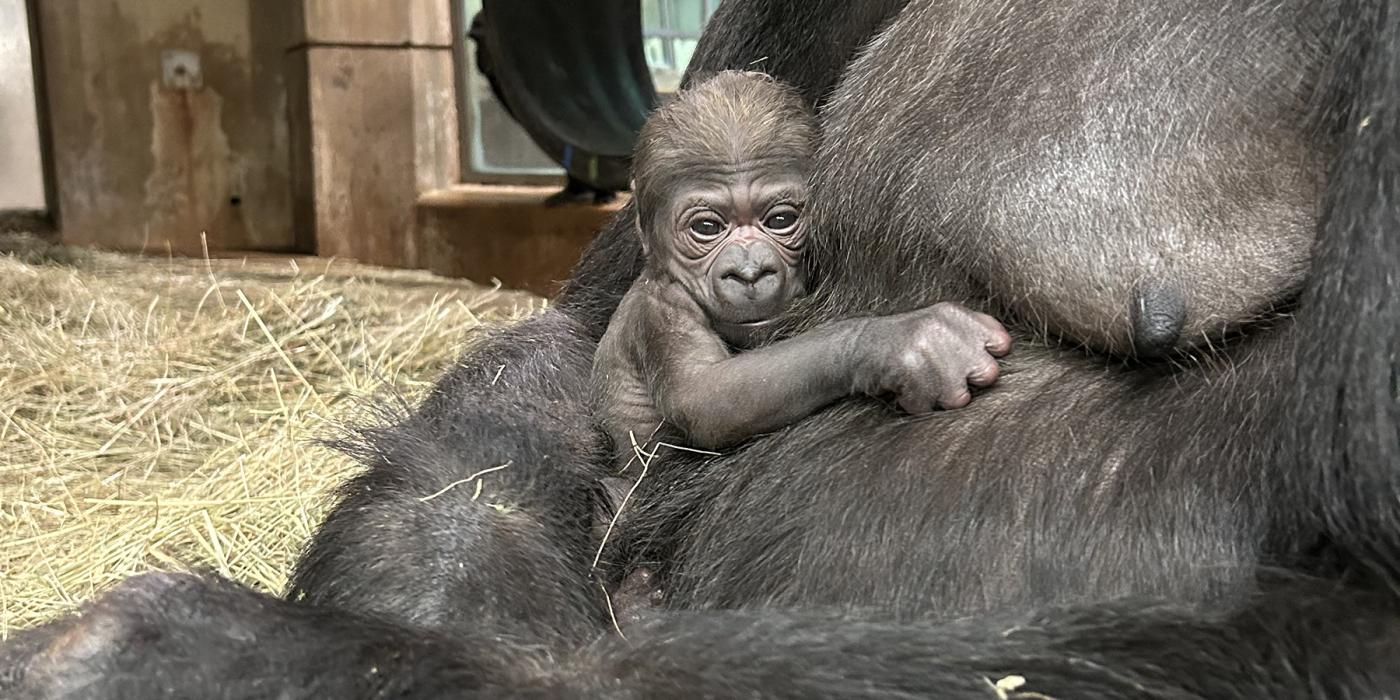#GorillaStory: Welcome, Moke
Celebrate the birth of our newest western lowland gorilla: Adopt a Species!
On Sunday, April 15, at 6:25 p.m., we welcomed our seventh western lowland gorilla at the Smithsonian’s National Zoo and Conservation Biology Institute! His name, Moke (pronounced “mo-KEY”) means “little one” or “junior” in the Lingala language.
When Calaya went into labor around 1:30 p.m. that afternoon, the members of her troop—silverback male Baraka (Moke’s father), female adult Mandara, and sub-adult female Kibibi—rallied around Calaya. They began pleasure rumbling, a vocalization that indicates they were content.
“To our utter surprise, Calaya joined in and began pleasure rumbling, even in the throes of labor,” said animal keeper Melba Brown. “The supportive environment seemed to make a big difference in terms of her birthing experience.”
Animal care staff were surprised at how quickly Calaya and her infant bonded, given that Moke is her first offspring. She cleaned the baby, cleared his nasal passages, and gently cradled him—exactly what the primate team hoped she would do.
Related Species:




